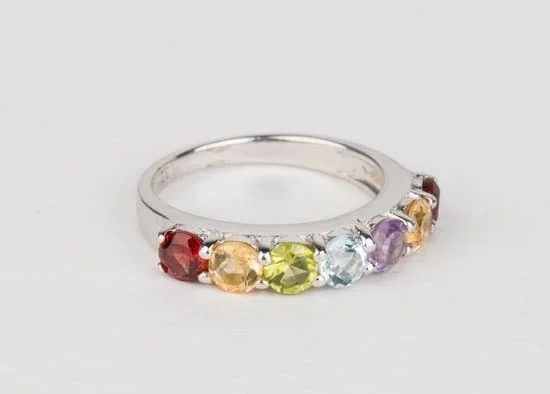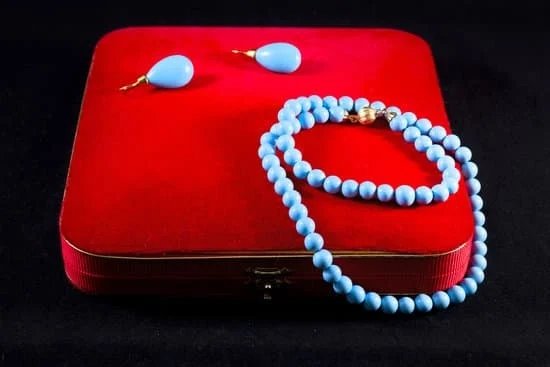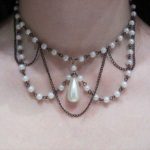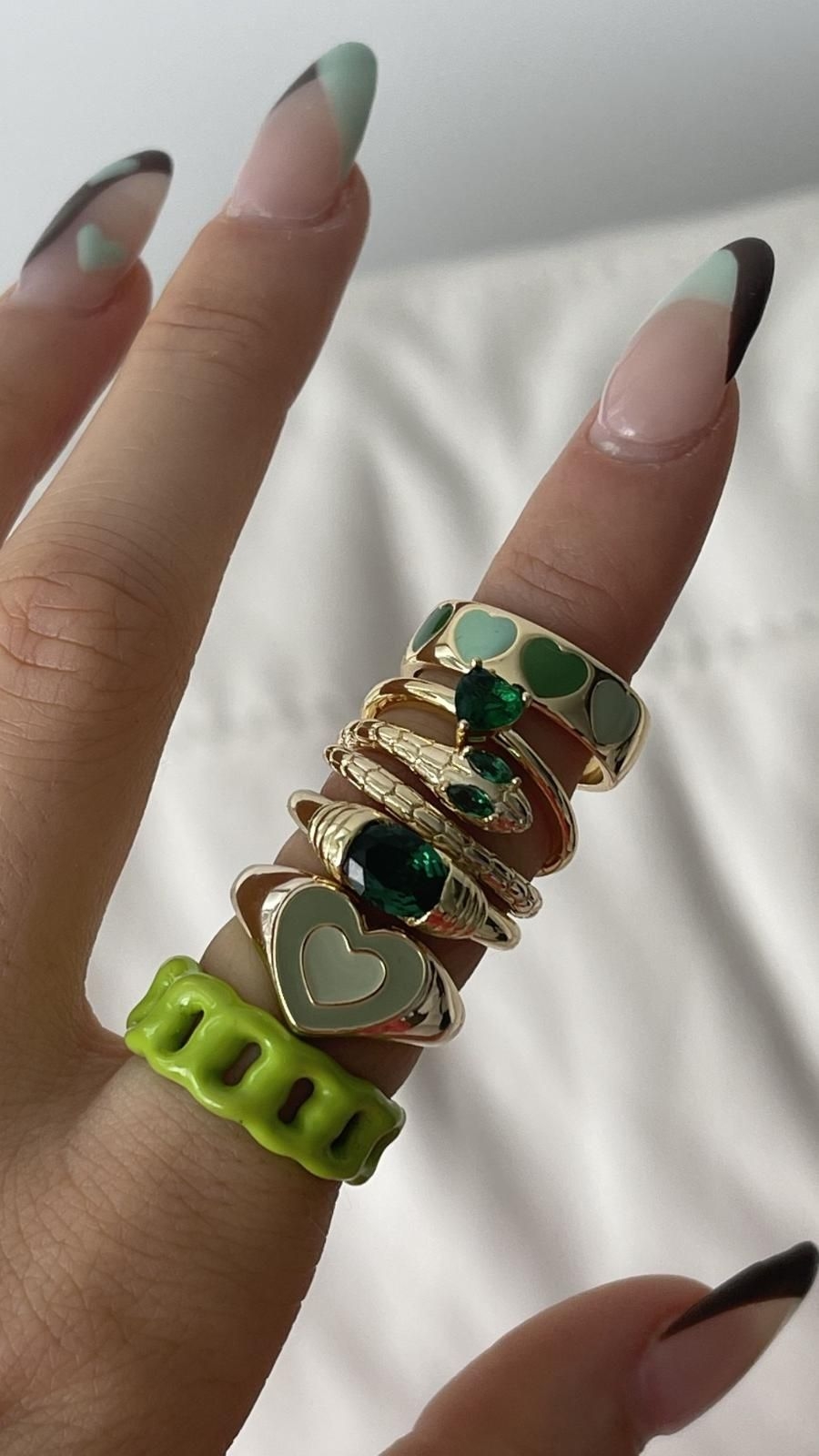Minerals and gemstones are commonly used to create jewelry, but the hardest known substance used for this purpose is diamond. Diamonds offer a durable material that can withstand everyday wear and tear and be kept looking its best with proper care. This makes it an ideal choice for many wearers who want a statement piece of jewelry they can enjoy for many years to come.
The hardness of any substance is measured on the Mohs scale; diamonds rank at 10, making it the hardest material found in nature. Other substances ranking on the scale include corundum (rubies and sapphires) at 9, topaz at 8, zirconia at 8-8 ½ and quartz at 7. While diamonds naturally rank highest on the scale, man-made alternatives such as cubic zirconia also offer similar protection against scratches and damage if cared for properly.
Most diamonds used in jewelry have been cut, polished or faceted by professionals to enhance their beauty and longevity. The process involves carefully shaping them into a variety of shapes using diamond saws, grinders and polishers.
During this process they can be further coated or treated to protect against color fading or scratching over time as well as improve its brightness or clarity. Treatments used on diamonds affect both the hardiness of the stone itself as well as its price tag; untreated versions without any enhancements tend to be more expensive than those with treatments applied to them.
Modern day technology has led to the development of other materials such as titanium which can also be crafted into beautiful pieces of jewelry withstanding everyday wear like traditional precious metals allowing wearers to choose from a range of options when selecting their perfect jewelry piece.
Innovative design processes such as 3D printing mean that even more types of items can now be created from a variety of materials beyond just metal work allowing wearers even greater choice when creating their custom one-of-a-kind pieces.
No matter what option chosen modern day wearers can enjoy beautifully crafted pieces that are designed to last lifetimes when adequately looked after so it’s important that pre-purchase research is carried out if unsure before making any significant purchases ahead of time.
Different Types of Harness Materials Used in Jewelry
Jewelry has been around for centuries and with time, many different materials have been used to make this beautiful art form. Some of the most popular choices are metals like silver, gold and platinum, as well as diamonds and gemstones. But the hardiest material used in making jewelry is tungsten carbide.
Tungsten carbide is a combination of two compounds: tungsten (or wolfram) and carbon. This makes it one of the hardest substances used to make jewelry, with a hardness rating over 8 on the Mohs scale (practically impossible to scratch).
Durability of Tungsten Carbide Jewelry
Tungsten carbide is highly resistant to scratching or breaking, making it a great option for jewelry that will last a lifetime. It keeps its shape even when banged up against other objects and does not tarnish like other metal-based jewelry. Furthermore, it’s hypoallergenic so people who tend to have reactions to certain metals may be able to equip themselves with a durable piece of jewelry made from tungsten carbide without fear of an allergic reaction occurring.
Tungsten carbide can also withstand extreme temperatures due to its strength and durability as well as the fact that it is largely heat-resistant; which means that it can easily weather hot climates or outdoor adventures without distorting its shape or appearance. In addition, tungsten carbide won’t corrode if exposed to harsher chemicals such as chlorine in pools – which makes it ideal for swimming enthusiasts who want a piece of jewelry that won’t change in harsh conditions.
Design Possibilities
Tungsten carbide provides limitless possibilities in terms of design features due to its extraordinary strength and durability – most commonly used in rings, necklaces and bracelets – but also available in many more creative designs such as cufflinks, money clips etcetera. One of the great aspects about designing with tungsten carbide is its versatility; You can combine it with other precious metals or gems for fantastic looking pieces that will keep its shine throughout a lifetime.
Additionally you can engrave many designs into tungsten carbide such as text messages or symbols without worrying about corrosion over time or long term wearand tear – further enhancing the cases for this affordable material choice.
Understanding Hardness Ratings of Jewelry Metals
When discussing the hardness of metals, it is critical to understand the impact hardness ratings have on particular applications. The rating scale used is known as the Mohs scale of mineral hardness. This scale was developed by Frederich Mohs in 1812 and has become an international standard for comparing the relative hardness of materials. On the Mohs scale, diamonds are rated a 10, meaning they are the hardest substance known to man.
Why Diamonds Are The Hardest
Diamonds are composed of crystallized carbon atoms arranged in a lattice similar to graphite. The difference between diamond and graphite lies within their molecular structure-diamond molecules have much stronger covalent bonds than graphite, leading to diamonds’ exceptional durability and hardness. It’s this strong structure that makes diamond one of the most sought-after materials in jewelry; it can hold its shape better than any other material.
Hardness Ratings Of Common Jewelry Metals
The most common jewelry metals all fall far short of diamond when comparing their relative hardness on the Mohs scale, with pure gold registering at 2.5-3 (10 karat gold is slightly harder at 4-4.5).
Silver and platinum both rate a bit below gold at 2-2.5 on the same scale while palladium is closer to gold at 4-4.5 rating yet notably softer than sterling silver or titanium which rate between 6-7 across different grades and configurations respectively.
Copper alone is fairly soft compared to other common jewelry metals at 2-3Mohs rating due to its ductile nature yet still considered appropriate for making low grade costume jewelry items like rings and earrings where lightweight designs are favored over durability or longevity over time compared to higher grade precious metal forms available in more traditional options like golden wedding bands for example.
Benefits and Advantages of Using Harder Jewelry Materials
Jewelry made from harder materials is much less likely to become damaged and broken. It can resist damage more significantly than softer jewelry material, allowing it to maintain its shape and luster over time. Additionally, harder materials tend to be more scratch-resistant, adding a layer of durability that is often appealing for those looking for long-lasting pieces. This type of jewelry will tend to age better over the years due to being composed of stronger substances.
Another advantage to using harder materials in jewelry is its weight. Heavier pieces are usually more noticeable, making them stand out a bit more on the wearer’s body. The heavier weight may also give the piece a feeling of luxury and quality because it suggests that it has a longer lifespan.
When it comes to what material is considered the hardest known substance used for jewelry, diamond is generally accepted as most durable choice by experts. Diamonds are strong enough that they won’t chip or break easily when exposed to pressure or water over time, making them an ideal choice for those looking for enduring pieces that stay in excellent condition through regular wear and tear.
Pros of Using Harder Jewelry Materials
- Less likely to get damaged or broken
- Scratch resistant
- Tends to age better
- More noticeable due to heavy feel
- Diamonds are considered the strongest
Factors Affecting Jewelry Material Durability & Resistance
When it comes to jewelry, the durability and resistance of a material is an important factor in deciding which option best suits the needs of a specific piece. Whether you are looking for a ring or earrings, there are many different materials that can be used, but one stands out from the rest when considering hardness and endurance. In fact, tungsten carbide is believed to be the hardest substance used in modern jewelry production.
What Makes Tungsten Carbide So Durable?
Tungsten carbide is an incredibly hard combination of tungsten and carbon atoms. It is grade 8 on the Mohs scale of mineral hardness meaning that it outperforms most of its competitors including gold or titanium – both materials traditionally used in jewelry production As a result, tungsten carbide has become popular throughout the jewelry industry due to its remarkable properties.
Another major benefit of tungsten carbide is its scratch-resistant surface. This is especially advantageous if you are looking for everyday pieces as they can maintain their original appearance despite regular wear and tear. This makes the material popular among those seeking longevity as well as reliability in their jewelry designs.
All About Tungsten Carbide Quality
Despite being incredibly durable, some pieces made with tungsten carbide may not last forever if not built to higher standards. Consequently, it’s vital to ensure quality control when shopping for products constructed with this material in order to get the longest lifespan possible from your purchase.
Additionally, due to its tough nature, it requires high powered machinery to refine and craft into beautiful pieces which often comes at certain financial cost associated with manufacturing these items at such precision levels. Fortunately however, the longterm cost savings from choosing this option easily outweigh any initial outlays as added value over time will more than make up for any higher initial costs incurred by opting for better quality upfront.
The Hardest Known Jewelry Material
Diamonds are renowned for their beauty, luster, and durability. Most people don’t know that they are also the hardest known material used for jewelry. Diamonds measure 10 on the Mohs hardness scale, making them virtually indestructible. This means that diamond jewelry is extremely resistant to scratches and will last for generations with proper care and cleaning.
Formation and Rarity of Diamonds
The formation of diamonds dates back billions of years, in conditions far removed from those existing on Earth today. Extreme pressure and temperatures around 2000 degrees Celsius lead to the creation of these precious stones, which formed over a long period of time as they were transported towards the Earth’s surface. The rarity of diamonds has been further enhanced by global exploration being limited due to their remote location and depth of occurrence.
High Demand For Jewelry
Since ancient times diamonds have been highly sought after due to their remarkable features like extreme hardness and dazzling brilliance. People around the world find it fascinating to own gemstone jewelry showcases their beauty in all its glory. As such there is a vibrant demand for diamond jewelry across every culture ranging from engagement rings to fashion earrings, pendants and necklaces, pushing up prices accordingly.
Different Shapes Of Diamond Jewelry
Due to its solid consistency without any cleavage planes, diamond can be cut into various shapes including round brilliant cut, princess cut, marquise cut, cushion cut, oval shape, heart shape etc along with thousands variations being available.Each type has its appeal as they brilliantly refract light producing an exquisite sparkle – often treasured by followers who appreciate a good sparkling jewel.
Understanding the Cost of Harder Jewelry Materials
When it comes to jewelry, all materials are not created equal. Some materials offer more renowned beauty at a lower cost than others, while some of the most coveted styles must be made from the hardest known jewelry material in order to maintain their desired shape and vivid color.
Common Jewelry Metals
For centuries, gold in its various guises has been a popular choice for pieces such as engagement rings and necklaces, status symbols of wealth and commitment. Silver also remains popular due to its relative affordability for a precious metal; although tarnishes easily and can discolor skin if worn for too long without proper protection or care.
Platinum has garnered more popularity in recent years due to its white lustrous look while being more hypoallergenic than cheaper metals such as nickel-plated brass or imitation gold plated jewelry.
Rarely Used Jewelry Materials
Tungsten is one of the rarer metals which has begun to see use in jewelry recently due to its strength when processed correctly. The alloyed versions with nickel are amongst the hardest known substances used for jewelry available on the market due to their difficulty in transitioning from solid into liquid form during processing; additionally tungsten is resistant to general wear and erosion making it durable enough to last generations with little maintenance required.
As tungsten rarity comes with a price tag similar to platinum, it’s unlikely that it will become widespread anytime soon; however it may begin replacing traditional metals over time due to its unique properties.
In reality there are many options when looking for harder substances used in jewelry creation such as titanium alloys or diamond simulants, though these tend not to be as mainstream for personal adornment purposes.
Each type of material has its own advantages and disadvantages which should be weighed before putting money down, since once purchased these items tend not to come cheap – especially if seeking a unique property like superior hardness compared against the tried-and-true metals traditionally utilized throughout history.
Conclusion Choosing the Right Jewelry Material For Your Needs
The hardest known substance used for jewelry is diamond. It is the hardest-known naturally occurring material, and ranks a 10 on Mohs scale of mineral hardness. This makes it extremely durable and well-suited for use in jewellery making since it will withstand a lot of wear and tear. Diamond has long been considered the most desirable material for creating fine jewelry because of its scintillating beauty, brilliance, durability, strength, rarity, and symbolic significance.
Diamonds are commonly used to create various jewelry styles like engagement rings, wedding rings, eternity bands, classic solitaire ring settings, pendants and earrings. Diamonds are exceptionally hard; however they are expensive so many people opt to purchase other diamond simulant stones which offer similar brilliance but an affordable price point.
Such simulants come in various forms like cubic zirconia (CZ) which consists of synthesized materials or Cubic Zirconium Oxide (CZO) which consists of lab-created gemstones such as moissanite which are composed of crystalline silicon carbide compounds with less carbon content than diamonds.
Other additional substances used to create jewelry include precious metals like gold, silver or platinum as well as alloys such as white gold or rose gold plus natural semi-precious gems like rubies and sapphires. Natural gemstones such as emeralds and aquamarine also last longer compared to other semi-precious stone varieties like quartz or garnet when set in jewelry pieces due to their unique hardness characteristics on the Mohs Scale.
There is no one size fits all answer when it comes to selecting the ideal substance for your desired piece because everything depends upon personal preferences based on budget constraints and style requirements. Ultimately when choosing the right material for your needs you must make sure that whatever you select can stand up against regular daily wear without compromising its original beauty and durability over time.

Welcome to my jewelry blog! My name is Sarah and I am the owner of this blog.
I love making jewelry and sharing my creations with others.
So whether you’re someone who loves wearing jewelry yourself or simply enjoys learning about it, be sure to check out my blog for insightful posts on everything related to this exciting topic!





